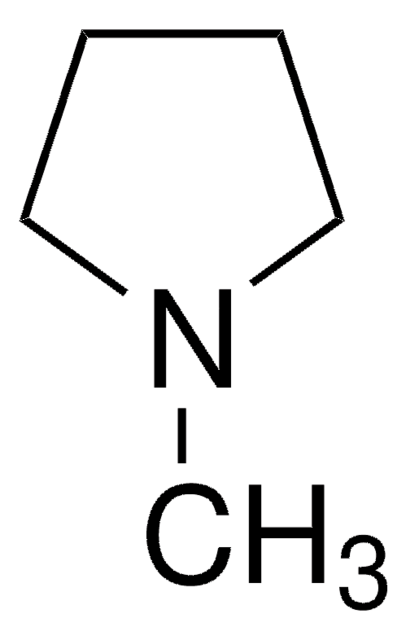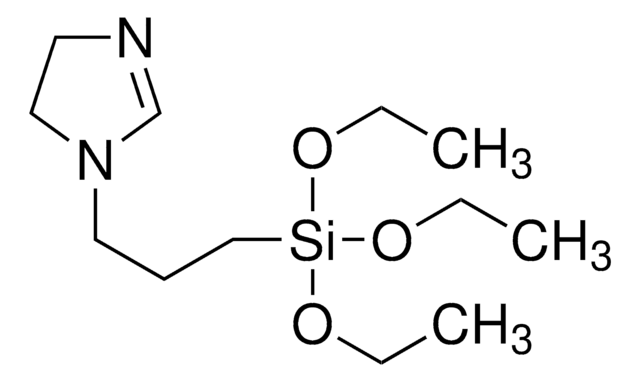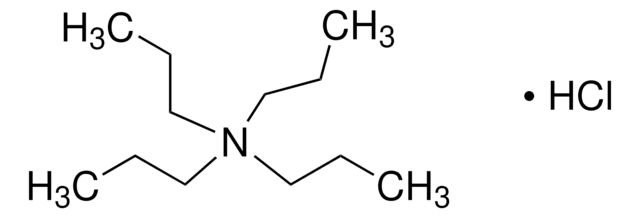Wichtige Dokumente
87249
Tetradodecylammoniumbromid
≥99.0% (AT)
Synonym(e):
Tetralaurylammoniumbromid
About This Item
Empfohlene Produkte
Qualitätsniveau
Assay
≥99.0% (AT)
Form
crystals
Verunreinigungen
≤0.5% water
SMILES String
[Br-].CCCCCCCCCCCC[N+](CCCCCCCCCCCC)(CCCCCCCCCCCC)CCCCCCCCCCCC
InChI
1S/C48H100N.BrH/c1-5-9-13-17-21-25-29-33-37-41-45-49(46-42-38-34-30-26-22-18-14-10-6-2,47-43-39-35-31-27-23-19-15-11-7-3)48-44-40-36-32-28-24-20-16-12-8-4;/h5-48H2,1-4H3;1H/q+1;/p-1
InChIKey
SMEFTBPJZGVAPK-UHFFFAOYSA-M
Verwandte Kategorien
Allgemeine Beschreibung
Anwendung
Signalwort
Warning
H-Sätze
Gefahreneinstufungen
Eye Irrit. 2 - Skin Irrit. 2 - STOT SE 3
Zielorgane
Respiratory system
Lagerklassenschlüssel
11 - Combustible Solids
WGK
WGK 3
Flammpunkt (°F)
Not applicable
Flammpunkt (°C)
Not applicable
Persönliche Schutzausrüstung
dust mask type N95 (US), Eyeshields, Gloves
Hier finden Sie alle aktuellen Versionen:
Besitzen Sie dieses Produkt bereits?
In der Dokumentenbibliothek finden Sie die Dokumentation zu den Produkten, die Sie kürzlich erworben haben.
Kunden haben sich ebenfalls angesehen
Unser Team von Wissenschaftlern verfügt über Erfahrung in allen Forschungsbereichen einschließlich Life Science, Materialwissenschaften, chemischer Synthese, Chromatographie, Analytik und vielen mehr..
Setzen Sie sich mit dem technischen Dienst in Verbindung.












